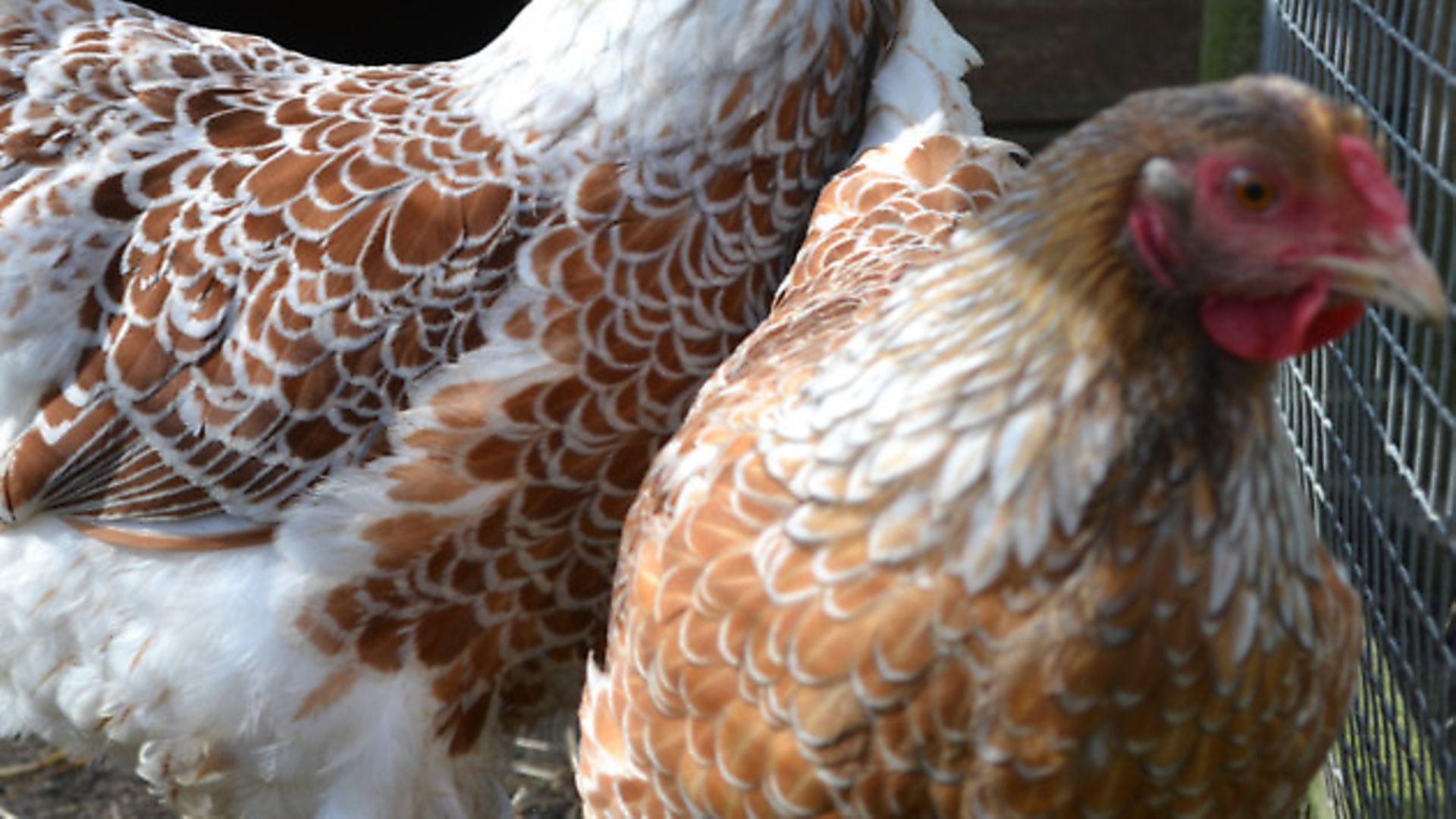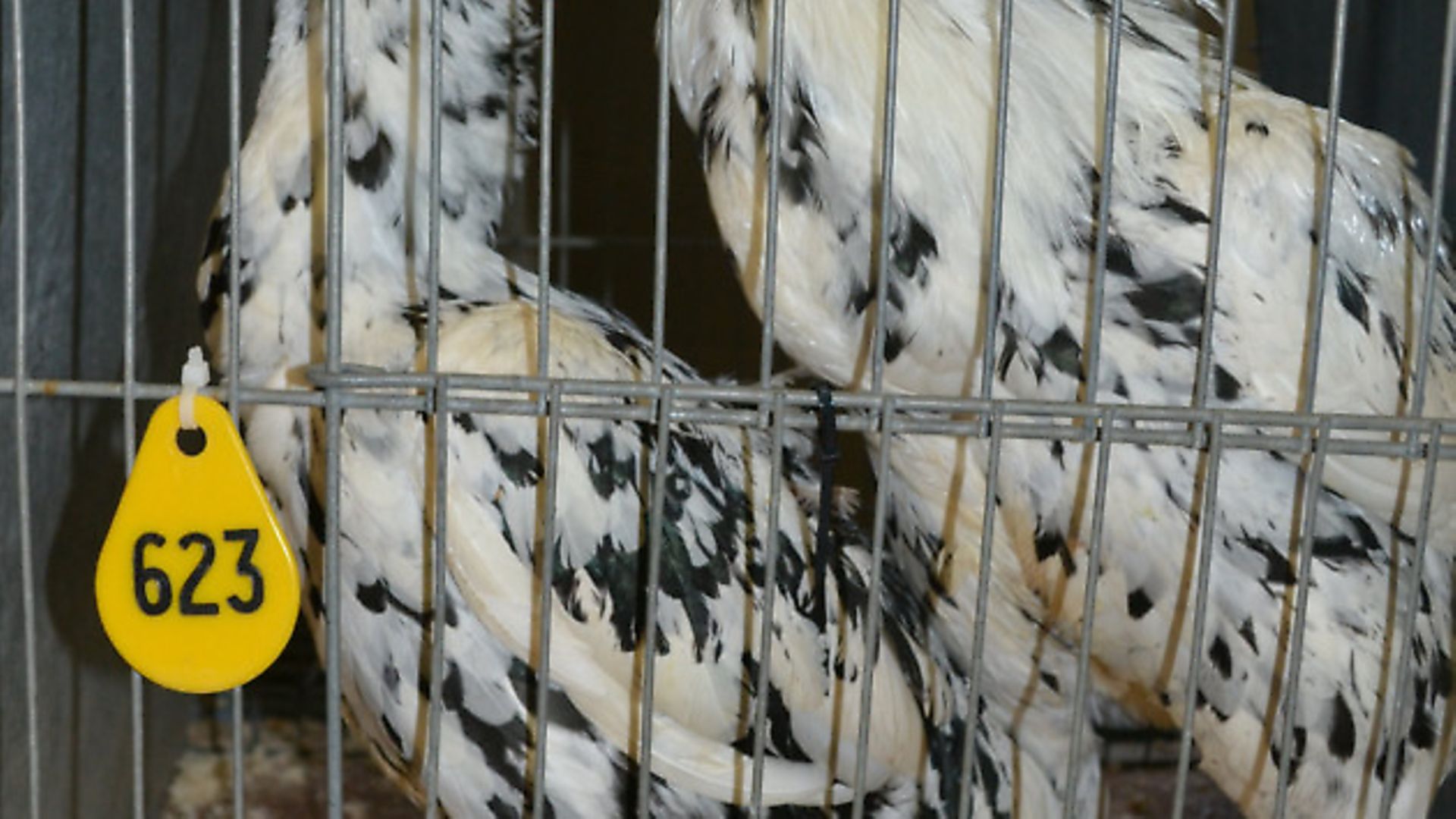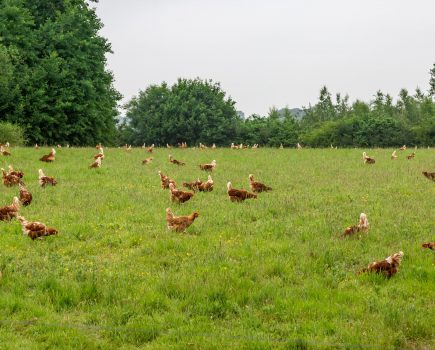Charlotte Popescu talks about how one broody hen starts… then another takes over

Sammy, my usually reliable broody, who is a Silkie Cross, went broody in February. Despite being a bit early in the season, I managed to get her some Exchequer Leghorn fertile eggs to sit on. Unfortunately, after about 10 days, I could see she wasn’t happy and when I let her out for food, water and a quick dust bath she was reluctant to go back to the nest. Eventually I let her do her own thing which meant she abandoned her eggs. On that particular day I had to go out for four hours, so of course the eggs went cold. But Florrie, my little Orpington bantam had just gone broody so the eggs went under her. Would they still hatch? Just about to send off my diary and the chicks are starting to hatch! Does Florrie realise that she has only sat for just over a week? Will she accept her chicks? It’s all looking positive.
Eggs laying picks up now
Some of my best egg layers were really late moulting and finally started losing their feathers in February. Consequently, after a very good December and January, the first half of February was probably my worst month for egg laying. April and May are always the best months, so now things are looking up. Even the oldest hens will lay at this time of year and most hens will be at their peak. Of course, they will then all start going broody so I will have my work cut out.

Going to the market
The market is always crowded, but I was determined to buy a couple of new birds on this occasion. I bid for a couple of large fowl buff-laced Wyandottes very early on at the auction and didn’t have to pay a vast sum to win them. Often the first birds go for less as bidders can be cautious to start with. They are gorgeous with lovely white fluffy bottoms. Having settled in really well, they are laying (albeit rather small eggs) and, despite having their own hutch, soon moved into the big black, ever popular, hen house.
Charlotte’s tips
Hybrids laying soft-shelled eggs
I find I sometimes get a persistent soft-shelled egg layer among my hybrids and no amount of oystershell consumed makes the slightest difference. Shell-less or soft-shelled eggs with just the membrane around the egg can be quite a common problem. This may happen in young pullets – the egg goes down through the oviduct so quickly that there is no time for the shell to be made. Sometimes pullets are adjusting to their new egg-laying functions with just the first few eggs being shell-less. If the egg has a very thin shell, there may not be enough calcium or vitamin D in the diet so crushed oystershells should be given. If a hen is still laying soft-shelled eggs after two or three weeks, it may be due to some inherent weakness in the strain which does not allow proper assimilation of calcium or an inherent malfunctioning of the reproductive tract – this could have been caused by infectious bronchitis or another disease when the hen was younger or intensive breeding may have led to malformed ovaries. With my problem layers I think the latter is the case and there is nothing that I can do about it. Often I am able to rescue the egg before other hens get in the nestbox and eat it. If the hens get to it first the nestbox bedding gets wet and egg yolk dribbles over the other eggs which is always a pain!
Introducing new hens
When increasing your flock, two or more hens should be added at any one time. New hens should be kept separate from the established flock for a few days although some people say it should be two weeks mainly for health reasons; if the new hens are carrying any infections this would help stop the spread of any disease. Ideally you should accommodate your new hens in a second hutch and run so that the birds can all get to know each other through the wire. If there is no alternative, you could put your new hens into the hen house at night when it is dark and all is quiet. Spraying all the hens with a little water to which a few drops of vinegar have been added is one idea – chickens have a reasonable sense of smell so if they all smell the same, this can help new hens to be accepted. You should then let your old hens out if they are free ranging but keep the new hens in a run so that they can get used to their new surroundings and sleeping quarters. I usually only keep my new hens confined for a couple of days, as with the buff-laced Wyandottes pictured. I could see they were healthy and very keen to peck at grass as soon as they arrived. I let them out and they very quickly adapted to their new surroundings and integrated really well with the rest of the flock.
Image(s) provided by:
Archant
Archant







